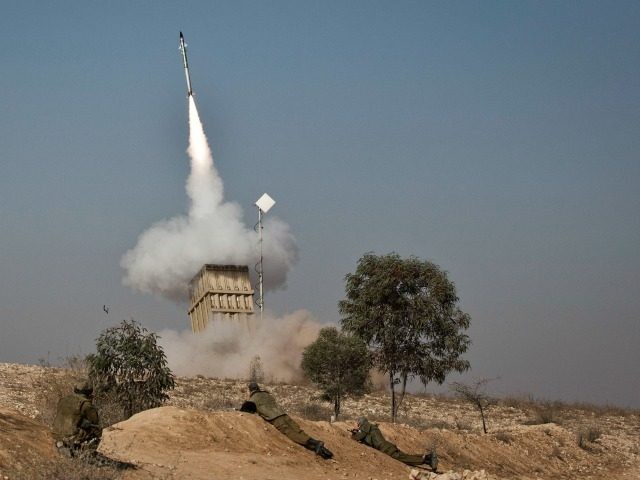TEL AVIV – The U.S. Army has purchased the Iron Dome from Israel, the missile defense system that for over a decade has been protecting Israelis from rockets launched from Gaza, Israel’s Defense Ministry announced Wednesday.
“The Iron Dome system will be used for deployed U.S. military forces as a defense system against a wide range of ballistic and airborne threats, and will be tested in the long run as part of a range of possible U.S. military responses to aerial threats,” a statement by the Defense Ministry said.
US Army Col. Patrick Seiber said in a statement that the U.S. Army will also be deployed for Indirect Fire Protection Capability.
“The Iron Dome will be assessed and experimented as a system that is currently available to protect deployed U.S. military service members against a wide variety of indirect fire threats and aerial threats,” Seiber said.
“While Iron Dome has been in operational use by the Israeli Air Force since 2011 and proven effective in combat, it should be noted that the U.S. Army will assess a variety of options for its long-term IFPC solution,” he added.
Last month, the American military asked Congress for $373 million to purchase two Iron Dome batteries from Israel, to include 12 launchers, two sensors, two battlement management centers and 240 interceptors.
The purchase marks the first time Jerusalem has sold Washington a full weapons system. It was also reported to have been the fastest arms deal in history.
The U.S. currently uses the THAAD missile defense systems to intercept short and medium-range ballistic missiles but does not possess any short-range air defense solutions.
American website Defense News reported that the Iron Dome competed against three other potential air defense systems during the SHORAD demonstrations, including systems by Boeing and General Dynamics Land Systems’ specially-armed Stryker vehicles.
The Iron Dome is equipped with 24 pounds of explosives and can intercept an incoming missile from 2.5 to 55 miles away. It also has the ability to monitor the projectile’s trajectory and calculate if it will land in an open area or population centers and operate accordingly.

COMMENTS
Please let us know if you're having issues with commenting.